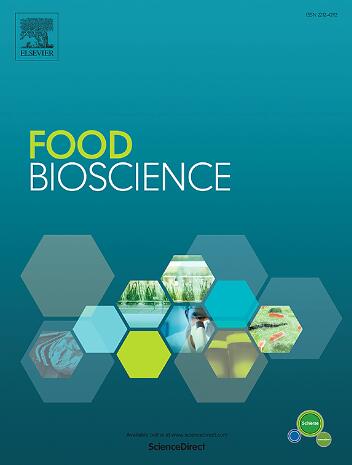Bimetallic organic framework nanozyme-driven aptasensor for colorimetric and photothermal dual-modal detection of kanamycin
IF 4.8
1区 农林科学
Q1 FOOD SCIENCE & TECHNOLOGY
引用次数: 0
Abstract
Kanamycin (KAN) residues in environment and food sources pose a considerable threat to human health, creating a strong demand for developing facile yet highly sensitive analytical methods. Herein, a highly sensitive aptasensor based on a bimetallic organic framework nanozyme was constructed for dual-modal KAN detection, employing both colorimetric and photothermal signals regulated by aptamer-controlled nanozyme activity. The synthesized Zr-Fe-MOF, exhibiting peroxidase-like activity, catalyzed the oxidization of colorless 3, 3′, 5, 5′-tetramethylbenzidine (TMB), resulting in the formation of a blue-colored oxidized TMB, which could generate detectable colorimetric and photothermal signals. Once bound to aptamer, its catalytic activity was significantly enhanced due to the formation of nanozyme-aptamer conjugates with increased negative charge. However, this activity was restored through the highly sensitive recognition of the target by the aptamer, leading to a decrease in colorimetric and photothermal signals. Thus, this aptamer-modulated Zr-Fe-MOF enable effective dual-modal detection of KAN, achieving detection limits of 0.17 μM and 0.47 μM for KAN in colorimetric and photothermal modes, respectively. Recoveries of 98.34%–108.8% and 91.67%–106.80% were respectively obtained by colorimetric and photothermal methods. The proposed dual-modal aptasensor demonstrates exceptional performance, paving the way for further exploiting antibiotic residues sensing platform.

求助全文
约1分钟内获得全文
求助全文
来源期刊

Food Bioscience
Biochemistry, Genetics and Molecular Biology-Biochemistry
CiteScore
6.40
自引率
5.80%
发文量
671
审稿时长
27 days
期刊介绍:
Food Bioscience is a peer-reviewed journal that aims to provide a forum for recent developments in the field of bio-related food research. The journal focuses on both fundamental and applied research worldwide, with special attention to ethnic and cultural aspects of food bioresearch.
 求助内容:
求助内容: 应助结果提醒方式:
应助结果提醒方式:


